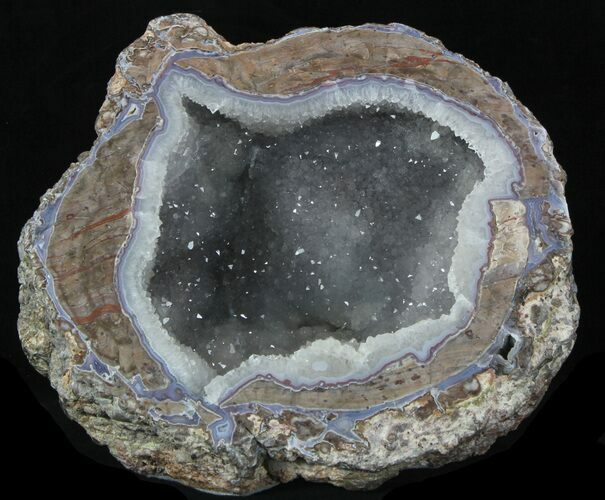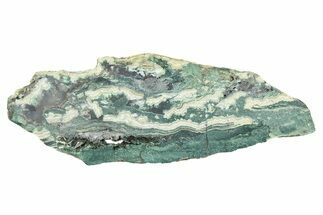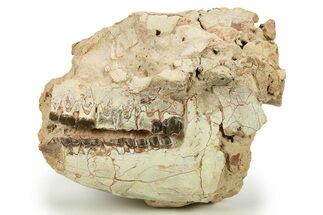This Specimen has been sold.
Huge 9.4" Sparkling Dugway Geode - Exceptional Example
This is an exceptional, 9.4" Dugway Geode full of sparkling, druzy quartz crystals. Dugway geodes rarely get this large, with most being baseball sized, and even when they do they rarely contain crystals of this quality.
The geode has been cut and polished with the half shown included. The base has been cut flat and lined with felt so that it displays nicely on a flat surface without the need for a display stand. Maybe 1 in 10,000 dugway geodes is this nice.
The geode has been cut and polished with the half shown included. The base has been cut flat and lined with felt so that it displays nicely on a flat surface without the need for a display stand. Maybe 1 in 10,000 dugway geodes is this nice.
These geodes come from what is known as the Dugway Geode Beds in Western Utah. About 6 to 8 million years ago, volcanic activity in the area deposited an extrusive igneous rock called rhyolite. Gasses trapped in the rock formed hollow cavities, and millions of years of groundwater circulation allowed minerals to precipitate into these cavities, forming crystals. The resulting crystal-lined cavities are known as geodes.
Roughly 32,000 to 14,000 thousand years ago, wave action from a large lake that covered much of western Utah (Lake Bonneville) eroded the geodes from the rhyolite. These geodes were then deposited in the lake sediments. These ancient lake sediments are what is now known as the Dugway Geode Beds. The most common mineral found in these geodes is clear quartz, though amethyst and rose quartz can also occur. The geodes tend to be relatively small, about the size of a baseball on average, though rare examples can be found up to a foot across.
Roughly 32,000 to 14,000 thousand years ago, wave action from a large lake that covered much of western Utah (Lake Bonneville) eroded the geodes from the rhyolite. These geodes were then deposited in the lake sediments. These ancient lake sediments are what is now known as the Dugway Geode Beds. The most common mineral found in these geodes is clear quartz, though amethyst and rose quartz can also occur. The geodes tend to be relatively small, about the size of a baseball on average, though rare examples can be found up to a foot across.
SPECIES
Quartz Geode
LOCATION
Dugway Geode Beds, Near Delta, Utah
SIZE
9.4" wide, 8.1" Tall, 6.1" deep
CATEGORY
SUB CATEGORY
ITEM
#33196
 Reviews
Reviews


















